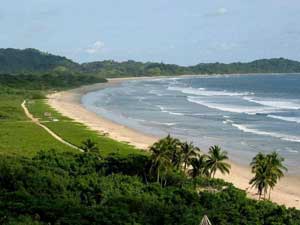 Talk about Nosara, Costa Rica, and you actually mean a stretch of several beaches on the Nicoya Peninsula – from Playa Ostional to Playa Nosara, Playa Pelada and Playa Guiones. This remote area of Guanacaste, just north of Samara in the country’s north Pacific, is known for long wide beaches, fantastic surfing, peace and quiet, and of course, it’s impressive wildlife.
Talk about Nosara, Costa Rica, and you actually mean a stretch of several beaches on the Nicoya Peninsula – from Playa Ostional to Playa Nosara, Playa Pelada and Playa Guiones. This remote area of Guanacaste, just north of Samara in the country’s north Pacific, is known for long wide beaches, fantastic surfing, peace and quiet, and of course, it’s impressive wildlife.
Three top nature activities you must do on a visit to Nosara are:
Turtle watching at the Ostional National Wildlife Refuge
Hundreds of thousands of Olive Ridley, Leatherback and Pacific Green sea turtles come to Playa Ostional, Playa Nosara, Playa Pelada and Playa Guiones every year to lay their eggs. Founded in 1984, the Ostional Wildlife Refuge in Costa Rica is the second largest nesting site in the world for Olive Ridley turtles.
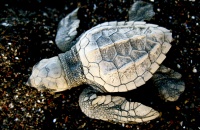 Turtles nest at Ostional all year, but from June to December the spectacular phenomenon of “arribadas” happens – massive arrivals of tens of thousands of turtles coming ashore all at once to nest and lay their eggs. The “arribadas” last about a week and usually occur during the last quarter moon phase or shortly after the new moon. BBC's Blue Planet TV series documented these happenings as an incredible wonder of nature.
Turtles nest at Ostional all year, but from June to December the spectacular phenomenon of “arribadas” happens – massive arrivals of tens of thousands of turtles coming ashore all at once to nest and lay their eggs. The “arribadas” last about a week and usually occur during the last quarter moon phase or shortly after the new moon. BBC's Blue Planet TV series documented these happenings as an incredible wonder of nature.
Hike in the Nosara Biological Reserve
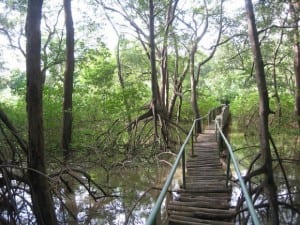 Located where the turtles meet the monkeys, the Nosara Biological Reserve is a 90-acre (35 hectare) private nature reserve on the southern side of the Nosara River. Trails take you past a large mangrove wetland and through dry tropical forest, one of the world’s rarer habitats. You can always find howler monkeys and iguanas in the trees, and the reserve also is home to coatis, raccoons, armadillos, snakes, crocodiles and other reptiles, deer and wild cats. Many different birds, such as seabirds, herons, waders, toucans, motmots and Long-tailed Manakins can be found in the reserve; altogether more than 270 species of birds have been sighted.
Located where the turtles meet the monkeys, the Nosara Biological Reserve is a 90-acre (35 hectare) private nature reserve on the southern side of the Nosara River. Trails take you past a large mangrove wetland and through dry tropical forest, one of the world’s rarer habitats. You can always find howler monkeys and iguanas in the trees, and the reserve also is home to coatis, raccoons, armadillos, snakes, crocodiles and other reptiles, deer and wild cats. Many different birds, such as seabirds, herons, waders, toucans, motmots and Long-tailed Manakins can be found in the reserve; altogether more than 270 species of birds have been sighted.
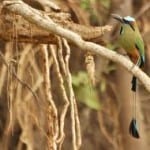 The entrance to the Nosara Biological Reserve is at Hotel Lagarta Lodge, which manages the protected area. You pay the entrance fee of $6 at the hotel and will receive a trail map with information about the reserve. A self-guided tour takes about two hours, or you can arrange a guided tour with a naturalist; guided boat tours of the mangrove estuary also are available. The best times to hike are early in the morning or late in the afternoon to see the most wildlife.
The entrance to the Nosara Biological Reserve is at Hotel Lagarta Lodge, which manages the protected area. You pay the entrance fee of $6 at the hotel and will receive a trail map with information about the reserve. A self-guided tour takes about two hours, or you can arrange a guided tour with a naturalist; guided boat tours of the mangrove estuary also are available. The best times to hike are early in the morning or late in the afternoon to see the most wildlife.
Nosara Wildlife Rescue and Sibu Sanctuary
The Nosara Wildlife Rescue and Sibu Sanctuary takes care of newborns, orphans and recently injured wild animals, giving them medical care and shelter during their immediate recovery. Animals then transfer to the 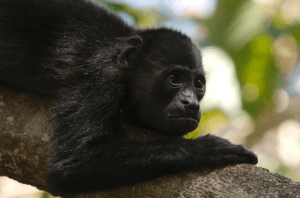 sanctuary for further rehabilitation; they live in natural habitats in preparation for reintegration back into the wild. Animals that cannot survive on their own are given a permanent home at the Sibu Sanctuary.
sanctuary for further rehabilitation; they live in natural habitats in preparation for reintegration back into the wild. Animals that cannot survive on their own are given a permanent home at the Sibu Sanctuary.
For more than 10 years, the nonprofit volunteer-run center has worked to educate the community to protect wildlife and their habitats. One of their main campaigns has been to fix electrical lines so they are insulated or buried underground; working with the National Electricity Institute (ICE), they have insulated nearly 30 miles of cables so far. Every year, many of Nosara's monkeys and sloths are electrocuted on power lines.
Educational tours take visitors through both the wildlife rescue and sanctuary, lasting about two hours. Visitors get to interact with rescued animals, and have the opportunity to sponsor an animal.
Hotels in Nosara, Costa Rica
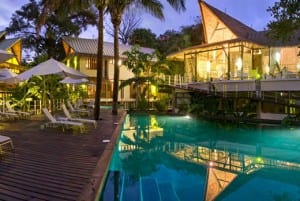 L’acqua Viva Resort & Spa at Playa Guiones, Nosara, borders the Nosara Coastal Forest Preserve. The Costa Rica beach hotel’s name means “live water,” which is a key element flowing around the spectacular Bali-style architecture. L’acqua Viva is one of the top hotels in Nosara, and is part of the Enchanting Hotels group of Costa Rica.
L’acqua Viva Resort & Spa at Playa Guiones, Nosara, borders the Nosara Coastal Forest Preserve. The Costa Rica beach hotel’s name means “live water,” which is a key element flowing around the spectacular Bali-style architecture. L’acqua Viva is one of the top hotels in Nosara, and is part of the Enchanting Hotels group of Costa Rica.
The best way to reach Nosara is to take a domestic flight from San Jose or Liberia to the Nosara domestic airport. Roads in the area are rugged and not well-marked.
Article by Shannon Farley
Comments